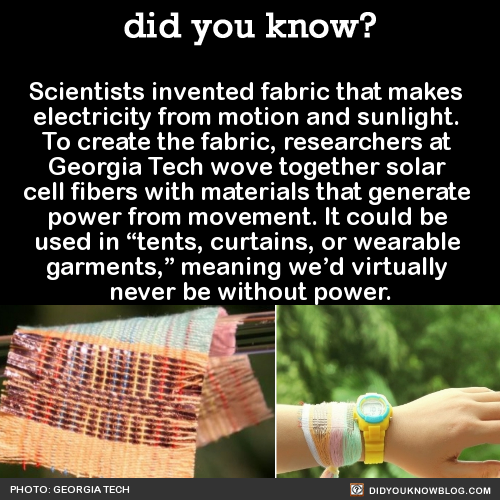NASA Wants Deep Space Habitat Ideas

NASA Wants Deep Space Habitat Ideas
How will humans live on Mars? Well, NASA’s not really sure yet, but if you’ve got any ideas you can submit them now. The agency has just put out a call for proposals for “deep space habitation prototypes.”
from NASA’s press release:
NASA is soliciting proposals for the development of prototypes for deep space habitats that will give astronauts a place to call home during long-duration missions supporting the agency’s Journey to Mars.
More Posts from Maevetheeuropan and Others



ExoMars Orbiter’s First Images
(Image credit: ESA/Roscosmos/ExoMars/CaSSIS/UniBE)
Morning on Mars






6 Martian sunrises, as seen by the HiRISE orbiter. Once again, not artist’s renditions.

The Body’s Price on Space Exploration
It can be easy to get wrapped up in the dollar amount when talking about the price of sending humans to Mars but there is a factor that no amount of government or private funding can overcome: the human body.
Read more on Miss Aerospace
Spacewalk Friday: Installing a New "Parking Spot" on Station
This Friday, Aug. 19, two U.S. astronauts will install a new gateway for American commercial crew spacecraft at the International Space Station.

Commercial crew flights from Florida’s Space Coast to the International Space Station will restore America’s human spaceflight launch capability and increase the time U.S. crews can dedicate to scientific research.

The adapter being installed (imaged below) was launched on a SpaceX Dragon cargo spacecraft and arrived on orbit July 20. NASA astronauts Jeff Williams and Kate Rubins will perform the spacewalk to install the equipment this Friday, Aug. 19. This will be the fourth spacewalk in Williams’ career and the first for Rubins.

Four previous spacewalks…like the one below…helped set the stage for installation of this docking adapter. During those previous spacewalks, other crew members laid hundreds of feet of power and data cables outside the space station.

On Wednesday, the robotics team using the Canadarm2 and its attached “Dextre” manipulator, will reach into the SpaceX Dragon trunk and pull out the docking adapter and position it for Friday’s spacewalk activities.

The morning of the spacewalk, while the astronauts are getting suited up, the robotic arm will position the docking adaptor near the port so that it will be ready for installation.

The two astronauts will venture outside the space station to install the first International Docking Adapter (IDA). This new adapter port will provide a parking space for U.S. Commercial Crew vehicles.
Watch LIVE!
Coverage of the spacewalk begins at 6:30 a.m. EDT on Friday, Aug. 19; with the spacewalk scheduled to begin at 8:05 a.m. EDT. Stream live online HERE.
Make sure to follow us on Tumblr for your regular dose of space: http://nasa.tumblr.com


Meet the all-female team of coders that brought us Apollo 11.
In 1969, the world watched as Neil Armstrong marked his historic achievement with the words, “That’s one small step for man, one giant leap for mankind.” His now-famous transmission was heard around the globe thanks to NASA’s Deep Space Network, which made communication from outer space possible.
That network was built by a woman named Susan Finley. She was part of an all-female team of coders whose work was integral to the success of the Apollo 11 mission. Science writer Nathalia Holt brings us their stories in her book, Rise of the Rocket Girls: The Women Who Propelled Us from Missiles to the Moon to Mars.
Listen to their story here.
[Images via NASA]
Okay now that I’m starting to get my ass in gear for astrophotography, I’d love it if some of y’all sated my need for attention and followed my instagram! I will return the favor of course
It’s mostly just space pictures, dogs, me, hiking stuff and lab stuff

Scientists invented fabric that makes electricity from motion and sunlight. To create the fabric, researchers at Georgia Tech wove together solar cell fibers with materials that generate power from movement. It could be used in “tents, curtains, or wearable garments,” meaning we’d virtually never be without power. Source

in 20-70 million years, Mars’ moon Phobos will get close enough to the surface of the planet that it will be ripped apart by the tidal forces. The resulting debris will most likely give Mars a planetary ring.
-
 yaboimildner liked this · 5 years ago
yaboimildner liked this · 5 years ago -
 jig-box liked this · 6 years ago
jig-box liked this · 6 years ago -
 neuropath-ic reblogged this · 8 years ago
neuropath-ic reblogged this · 8 years ago -
 shadowsoftomorrow reblogged this · 8 years ago
shadowsoftomorrow reblogged this · 8 years ago -
 abx909 reblogged this · 8 years ago
abx909 reblogged this · 8 years ago -
 weepingtigerfestival-blog liked this · 8 years ago
weepingtigerfestival-blog liked this · 8 years ago -
 maevetheeuropan reblogged this · 8 years ago
maevetheeuropan reblogged this · 8 years ago -
 jesterjoe45-blog liked this · 8 years ago
jesterjoe45-blog liked this · 8 years ago -
 harionp liked this · 8 years ago
harionp liked this · 8 years ago -
 healme12354-blog liked this · 8 years ago
healme12354-blog liked this · 8 years ago -
 wear-eall-stardust liked this · 8 years ago
wear-eall-stardust liked this · 8 years ago -
 onedaythisboywillvanish-blog liked this · 8 years ago
onedaythisboywillvanish-blog liked this · 8 years ago -
 thegooseg13 liked this · 8 years ago
thegooseg13 liked this · 8 years ago -
 cy8erwitch liked this · 8 years ago
cy8erwitch liked this · 8 years ago -
 midnightglow liked this · 8 years ago
midnightglow liked this · 8 years ago -
 cylinanightshade liked this · 8 years ago
cylinanightshade liked this · 8 years ago -
 maevemauvaise reblogged this · 8 years ago
maevemauvaise reblogged this · 8 years ago -
 maevemauvaise liked this · 8 years ago
maevemauvaise liked this · 8 years ago -
 roughknuckles-victoria reblogged this · 8 years ago
roughknuckles-victoria reblogged this · 8 years ago -
 existfxl reblogged this · 8 years ago
existfxl reblogged this · 8 years ago -
 anoush-laniaka liked this · 8 years ago
anoush-laniaka liked this · 8 years ago -
 saintetee reblogged this · 8 years ago
saintetee reblogged this · 8 years ago -
 saintetee liked this · 8 years ago
saintetee liked this · 8 years ago -
 clefairyfanaccount liked this · 8 years ago
clefairyfanaccount liked this · 8 years ago -
 existentialist-emergence liked this · 8 years ago
existentialist-emergence liked this · 8 years ago -
 00xlegendaryx00-blog liked this · 8 years ago
00xlegendaryx00-blog liked this · 8 years ago -
 kumasama liked this · 8 years ago
kumasama liked this · 8 years ago -
 sheepheadfred reblogged this · 8 years ago
sheepheadfred reblogged this · 8 years ago -
 cranberriesinthesnow reblogged this · 8 years ago
cranberriesinthesnow reblogged this · 8 years ago -
 theblessedbear reblogged this · 8 years ago
theblessedbear reblogged this · 8 years ago -
 aestheticexit liked this · 8 years ago
aestheticexit liked this · 8 years ago -
 bewildered-beast reblogged this · 8 years ago
bewildered-beast reblogged this · 8 years ago -
 one-for-all-and-all-for-coffee reblogged this · 8 years ago
one-for-all-and-all-for-coffee reblogged this · 8 years ago -
 foxjevilwild liked this · 8 years ago
foxjevilwild liked this · 8 years ago -
 amekiee liked this · 8 years ago
amekiee liked this · 8 years ago -
 erstwhilesky-blog liked this · 8 years ago
erstwhilesky-blog liked this · 8 years ago -
 daisybong liked this · 8 years ago
daisybong liked this · 8 years ago -
 postmodernismruinedme reblogged this · 8 years ago
postmodernismruinedme reblogged this · 8 years ago -
 mahalshairyballs reblogged this · 8 years ago
mahalshairyballs reblogged this · 8 years ago

